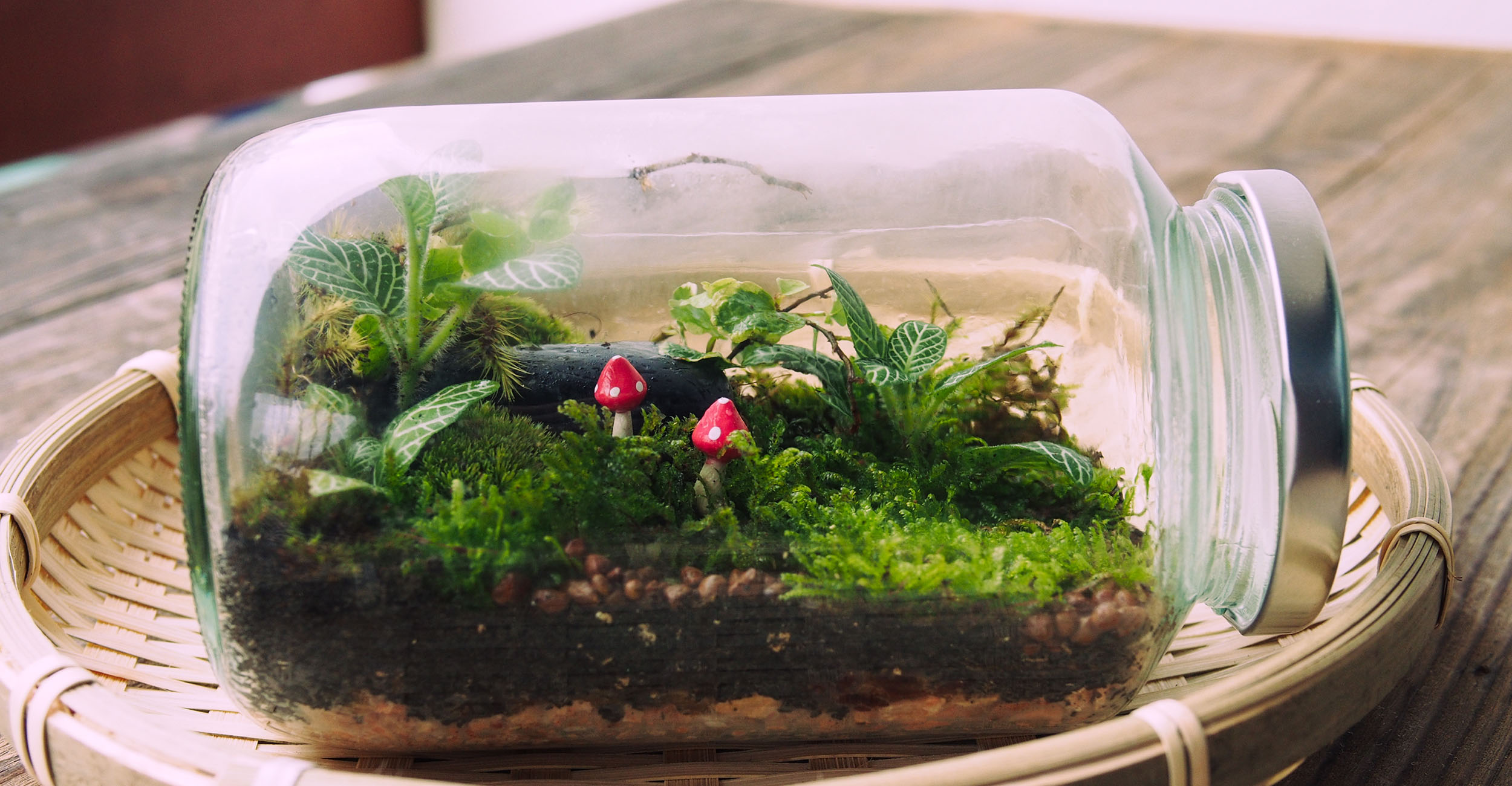
Terrariums can introduce a new generation to gardening
Wednesday, August 24, 2022
Media Contact: Trisha Gedon | Sr. Communications Specialist | 405-744-3625 | trisha.gedon@okstate.edu
When people think of gardening, they probably envision the traditional plot of land filled with vegetable plants, flowers and shrubs. It’s possible, however, to have a tiny garden inside the home.
Terrariums not only add to a home’s décor, they are also a great way to introduce the younger generation to gardening and help foster the love of the hobby, said Shelley Mitchell, Oklahoma State University Extension 4-H Youth Development horticulture specialist.
“Gardening with toddlers and preschoolers allows them to experience plant care as well as develop an appreciation of plants and learn where some of their food comes from,” Mitchell said. “They also learn responsibility, team work and gain a respect for nature. Children take great pride when helping adults with a hands-on project.”
With the traditional gardening season winding down, children can still get involved in gardening by setting up a terrarium in the house. The environment inside the terrarium allows youngsters, as well as adults, to grow some plants they may not be able to grow outdoors.
A terrarium is a garden in an enclosed glass or plastic container. With proper care, a terrarium creates a humid atmosphere that protects tender, tropical plants that are otherwise difficult to grow in Oklahoma’s dry atmosphere.
“While there are some plants that are suitable for both, succulents are a category of plants that shouldn’t go into a terrarium,” Mitchell said. “Succulents thrive in drier soil and low humidity, which is pretty much the opposite of a terrarium.”
Selecting the right terrarium container is important. It should be made of clear glass and have a tight-fitting lid. If you don’t have a lid, the opening can be covered with clear plastic wrap. You can upcycle an old aquarium or glass gallon-sized jars; just make sure they are clear.
Mitchell said good potting soil from the local garden center is a must for a successful terrarium.
“It’s not recommended to use garden soil because it’s too heavy and doesn’t provide adequate aeration or capillary movement of water,” she said. “It also likely contains weed seeds, insect eggs and disease-causing organisms, none of which would be beneficial in your terrarium.”
Choose naturally dwarf, slow-growing, high humidity tolerant plants that do well in low to medium light levels where the terrarium is placed.
“Get creative with textures and shades of green to create visual interest,” she said. “Once planted, place the terrarium near a window but avoid direct sunlight. Don’t be alarmed if the walls of the terrarium fog up in the first few days. It may take a couple of days to establish a rain cycle within the terrarium.”
To avoid the plants outgrowing the terrarium, keep the use of fertilizer low – about half the rate and frequency recommended on the fertilizer label.
More detailed information, along with a list of suggested terrarium plants, is available in the OSU Extension fact sheet HLA-6438 Terrariums.
